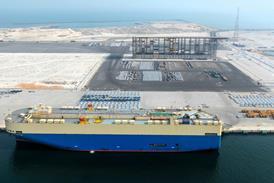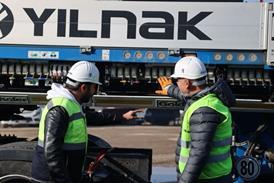As the Red Sea crisis escalates, actors in the supply chain are having to navigate the complexities of re-routing and determining alternative solutions. Some are turning to multimodal solutions that utilise the Silk Road.

According to Globalink Logistics, disruption on the Red Sea has underscored the critical role of Eurasian overland transport, connecting Asia and Europe. It has been providing a multimodal approach that integrates rail, road and air transportation.
The company said it has 36 service stations across Western China, Central Asia, the Caucasus and up to the Black and Baltic Seas. “We’ve listened to our customers and adapted our multimodal services to suit their diverse needs and budgets, offering road-air transit solutions that cut costs by up to 50 percent compared to direct airfreight from China to Europe. Our all-road option delivers in less than 20 days, saving up to 70 percent against airfreight,” Siddique Khan, ceo of Globalink Logistics, explained.
Certainly, the disruption is having a knock-on effect on supply chains and trade lanes. As the majority of shipping lines re-route away from the area, including multipurpose operators, freight rates are on the up.
While not a substantial hike, Toepfer Transport’s monthly multipurpose rate index registered a month-on-month increase of 0.21 percent, with the average daily time charter rate standing at USD11,684 at the beginning of February compared to USD11,660 at the start of January. The analyst said that, as most carriers avoid sailing to areas that are endangered by the Houthi attacks, the additional tonnage miles created by ships sailing via the Cape of Good Hope increase the fleet utilisation.
On the operational side, this requires adjustments on mid-term and long-term scheduling. “These effects help to stabilise the charter market and thus the TMI is moving (very) slightly upwards again,” Toepfer added.
For general cargoes, rates in the airfreight sector are similarly on the up but, according to DSV, customers are “buffering up” to combat the impact of the Red Sea crisis and (so far) it has not resulted in a major shift to air.
As reported in HLPFI’s sister publication Air Cargo News, the forwarder’s new chief executive Jens Lund explained that some customers are taking the necessary steps to mitigate the extra 14 days container shipping lines are taking to deliver goods to Europe as a result of shipping via the Cape of Good Hope.
Lund said that customers were more used to disruption these days and therefore more open to constructive dialogue about the best way to manage the flow of cargo. “Customers might be able to fix this issue just by buffering up, so that they will push more through, and have more in storage because they don’t get as frequent shipments,” he explained. “Other customers might have the demand to have a shorter lead time and here, of course, there is service where you could actually ship the cargo to Dammam and then cross Saudi Arabia and then put it on a vessel again. And then lastly, of course, there is always the opportunity, if you’re really in a hurry, to move to airfreight.”
For project cargo shippers, however, the alternative options are limited.
Jeb Clulow, partner at law firm Reed Smith’s transportation industry group, recognised that some operators have adopted a ‘keep calm and carry on approach’ and continue to transit the Red Sea. For carriers that consider the transit to be manageable, it is a case of deploying AIS shutdowns, course alterations, armed guards, and significantly increased war risk premiums (0.7 percent of a vessel’s value up from 0.07 percent).
He said: “The London marine insurance market has widened the area in the Red Sea judged to be ‘high-risk’, which is an additional insurance premium area. The timing of these security issues compounds difficulties for operators, coinciding with disruptions in transits via the other great canal, the Panama Canal. In this case, a severe drought has reduced the Panama Canal’s capacity. In both cases many operators are taking the longer and more expensive route.
“Whether an owner may take such actions, it is largely regulated by their contract or charterparty. Usually, the issue will be dealt with in a war risk clause which regulates the situation where the passage through a particular stretch of water exposes a vessel to the risk of attack. In some cases, it is a matter for negotiation on an ad hoc basis to determine the course of action.”
The deteriorating security situation in the Middle East has certainly cast a shadow over what has shaped up to be a massive market for the heavy lift and project logistics business. The region has been a buoyant market with major capital projects under way, including QatarEnergy’s North Field expansion and Saudi Arabia’s giga-projects, which are supported by the country’s Public Investment Fund (PIF).
Further still, according to Simona Peter, business development at UAE-based Fleet Line Shipping, “with over 600 oil and gas projects anticipated to kick off in the Middle East, specifically in Saudi Arabia, the UAE, Iran, Iraq and Türkiye, between 2023 and 2027, there is a strong indication that project activity will continue without any significant deceleration… we have already started seeing these movements materialise and expect this trend to continue throughout the coming decade.”
The region’s fortunes, however, hinge on its security situation. “The state of affairs in the Middle East will largely depend on Israel’s ability to cooperate with regional Arab leaders to reach a humanitarian ceasefire agreement. For now, it is a wait and watch situation,” she summarised.
















